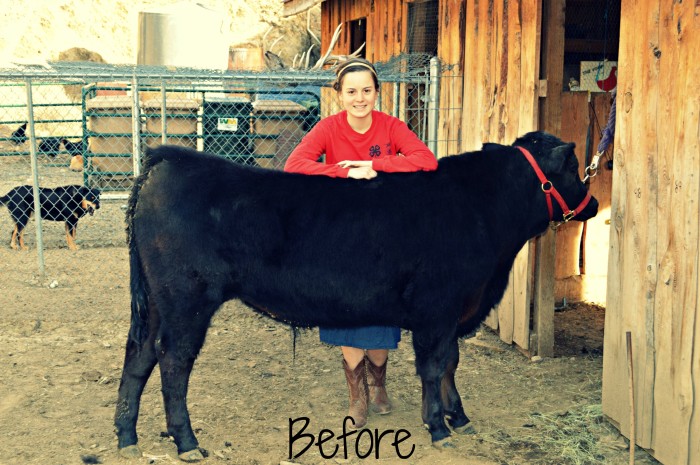3 Things We Can Learn from 4-H
For the last 8 months or so our little farm had some additional critters besides our normal chickens, goats, cats and dog. As part of the kids’ 4-H projects…
…we had Sir Kendrick…
and
…Bacon & Daisy…
I think 4-H is a great program and for those that are looking for ways to make the most out of your projects, you can also let this count for animal husbandry.
In 4-H they learn what it takes to make their pig grow to the proper weight besides basic information about the species of animal they’re raising. They are required to give an oral presentation on something related to the kind of animal they are raising, too.
And they meet business leaders in the community when they go to present their 4-H project to them so as to have more bidders at the auction.
They’ve moved our 4-H EXPO from April to October and for the kids this is probably the most exciting part of the whole project. Getting to show their animal and sell it at the auction. Every 2 years we have a different judge come in to judge the animals on confirmation and then in a different class they’ll judge the kids for their showmanship skills. Every judge has little things that are his pet peeves and things that he really likes. You’re never sure for the first while of the show what those things will be so you have to pay attention to the classes that are ahead of you to try and pick up on his likes and dislikes.
This year was a great year for Justus and Audrey. They both won Grand Champion showman in their division.
Justus won Jr. Grand Champion for swine and his 1st belt buckle. We were all so very happy for him.
and
Audrey won Novice Grand Champion Showman for swine. So excited for her, too!
The judge mentioned something this year that I thought was quite interesting. He correlated showing their animals with presenting themselves to others whether in the work force or elsewhere. I began to think about it and thought of 3 ways that we can look at showmanship in 4-H as applicable to every day life.
3 Ways 4-H Showmanship Can Be Applied to Everyday Life
1. When showing an animal it is important to know how to set it up and to have it be able to obey the cues you give it. When we are able to get the animal to follow our cues, it reflects the time spent training it.
We once had a lamb that was was not too tall and who was named, “Shorty”. That lamb was very energetic and could jump higher in the air than my son. He had a hard time managing him. It was the lambs nature, true, but my son also didn’t spent the time he should have with Shorty to help him show at his best.
How this may look in our life: Cues are the foundation of habits, whether they be good ones or bad. Cues may be as simple as it’s bedtime and that means a goodnight kiss for the children, a meal setting before us is our cue to thank the Lord for what he has provided, or a full laundry hamper is our cue to throw a load into the wash machine. We must spend time training ourselves and our children to respond to visual cues so that life will run a little smoother.
2. So you may not have the calmest of animals and sometimes they just won’t cooperate (they keep getting out of step, won’t set-up properly or just want to have their own way), but if you keep your cool and continue to give it your best effort you will still shine more than if you throw a “mini-fit” and begin jerking your animal around.
How this may look in our life: There will be days where nothing seems to go right and you feel like life is overwhelming you. (I just had one of those days, as a matter-of-fact. And was that me that threw a “mini-fit” big fit, too? Oh dear, so much to learn!) But instead of losing yourself in the moment, why not keep your mind upon our Lord and Saviour, Jesus Christ, and the outcome you really want. “Thou wilt keep him in perfect peace, whose mind is stayed on thee: because he trusteth in thee. Isaiah 26:3
3. We have studied and learned information pertinent to what we are doing. (The judges may ask you questions about your animal. Can you tell where certain cuts of meat come from, what is your pig’s ear notch, etc.)
How this may look in our life: To know a subject properly, we must spend time with it. Learning how to eat healthy may take some reading and contemplation as you consider what foods you should remove from your pantry shelves. To understand how children learn best, as a homeschooling mom, you will need to read and talk with others, etc. Whatever the subject, whenever you put forth effort into learning about it , it shows you care.
To Wrap it Up… 3 Things We Can Practice Today
-
Cues for building good habits
-
Keeping our mind stayed on Him
-
Learning more about a subject we are interested in
Do you have any added thoughts or suggestions about the list I have made? How do you practice these things in your life?









One Comment
carol wagner
I bet they were excited!! Congratulations to the children for their wins!